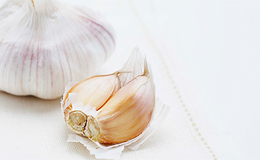Tag Archives: chicken
Moroccan Chicken with Tomato Dressing
Moroccan Chicken with Tomato Dressing
![FB-Moroccan-Chicken-w-Tomato-Dressing_p [640x480].jpg](https://www.elixirnews.com/assets_c/2010/09/FB-Moroccan-Chicken-w-Tomato-Dressing_p [640x480]-thumb-480x639-220.jpg) Serves 4
Serves 4
Preparation time: 25 minutes, plus overnight marinating
Cooking time: 12-15 minutes
4 chicken breasts, skin on if preferred (healthier without because most of the fat is within the skin).
Moroccan Marinade:
1 tsp cumin seeds
Large handful of fresh coriander, chopped
1 small onion, very finely chopped
1 red chilli, deseeded and finely chopped
2 plump garlic cloves, crushed
120ml/8 tbsp Filippo Berio Olive Oil
1 lemon, juice only
Salt and freshly ground black pepper
Tomato Dressing :
100 ml/3½ fl oz Filippo Berio Extra Virgin Olive Oil
3 tbsp roughly chopped chives
1 tbsp red wine vinegar
350g/12oz vine-ripened tomatoes, halved
Salt and freshly ground black pepper
Method:
1. Slash the chicken breasts 3 times with a sharp knife and put into a glass dish.
2. To prepare the Moroccan marinade, heat a small heavy-based pan on the hob and add the cumin seeds. Shake them around for a few seconds until their aroma rises. Remove from the heat and crush roughly using a mortar and pestle. Put the seeds into a bowl with the coriander, onion, chilli, garlic, olive oil and lemon juice. Add salt and pepper to taste and mix all the ingredients together well. Pour over the chicken, cover and refrigerate overnight.
3. To make the tomato dressing, pour the olive oil into a blender or food processor,
add the chives and vinegar and blend until smooth. Scrape the mixture into a bowl.
4. Remove the seeds from the tomatoes then chop. Add to the dressing and season.
5. Cook the chicken on a fairly hot barbecue for about 6-7 minutes on each side
or until cooked through, brush with the marinade during cooking. Serve with the
tomato dressing.
Protein


This contains the 25 amino acids which are the building blocks of the body and is found in fish, meat, beans, peas, lentils, eggs, cheese and soya.


